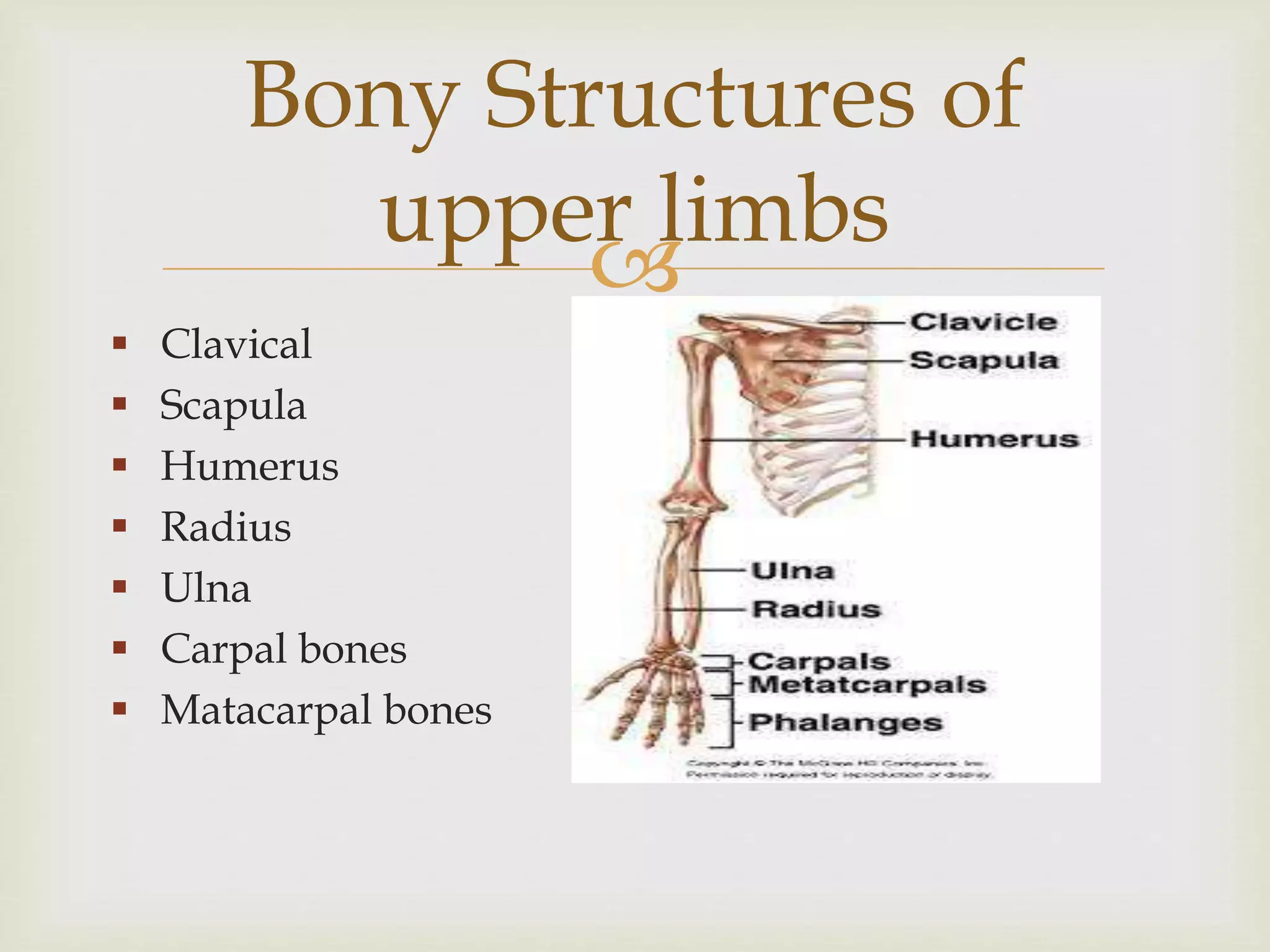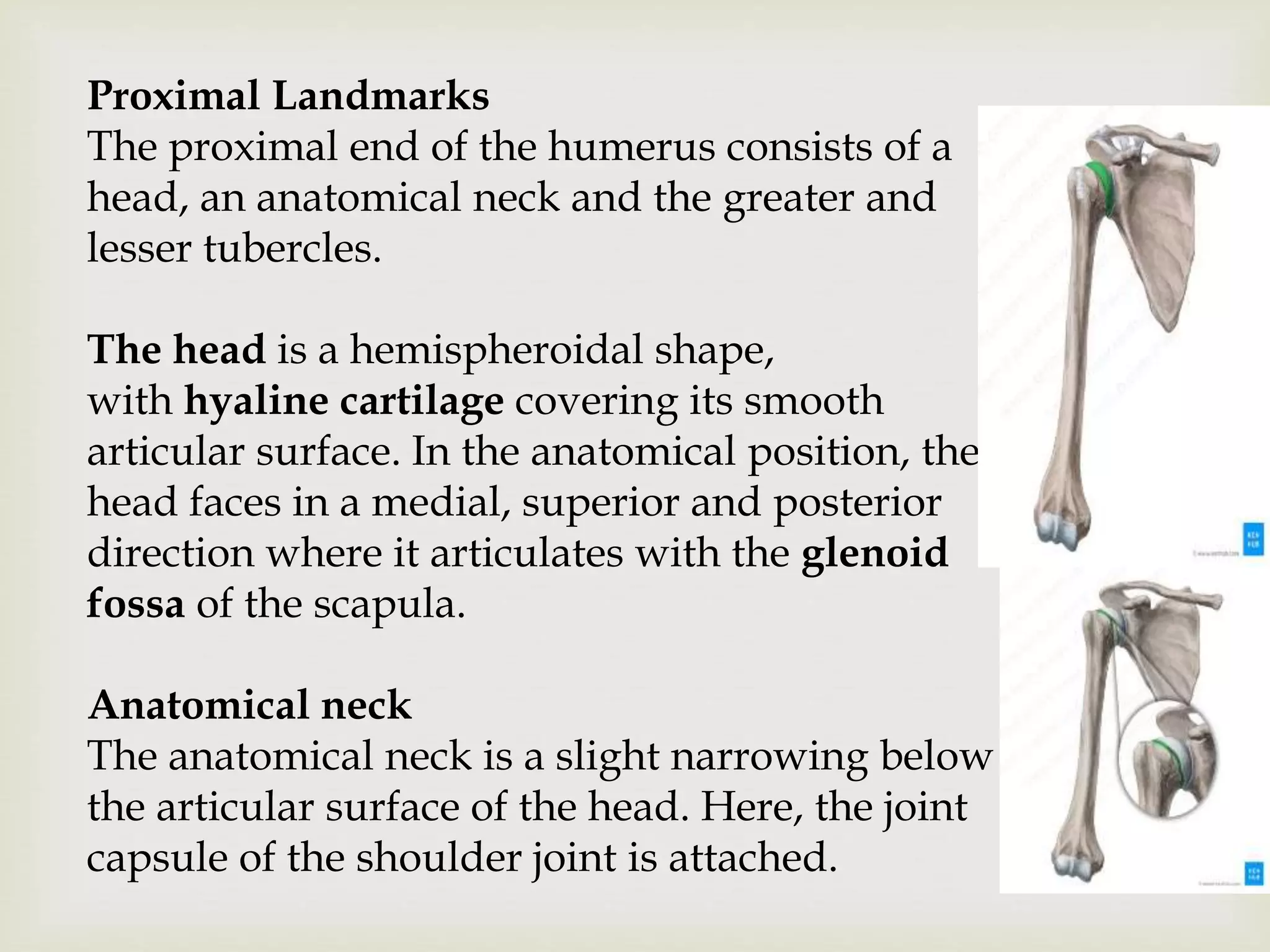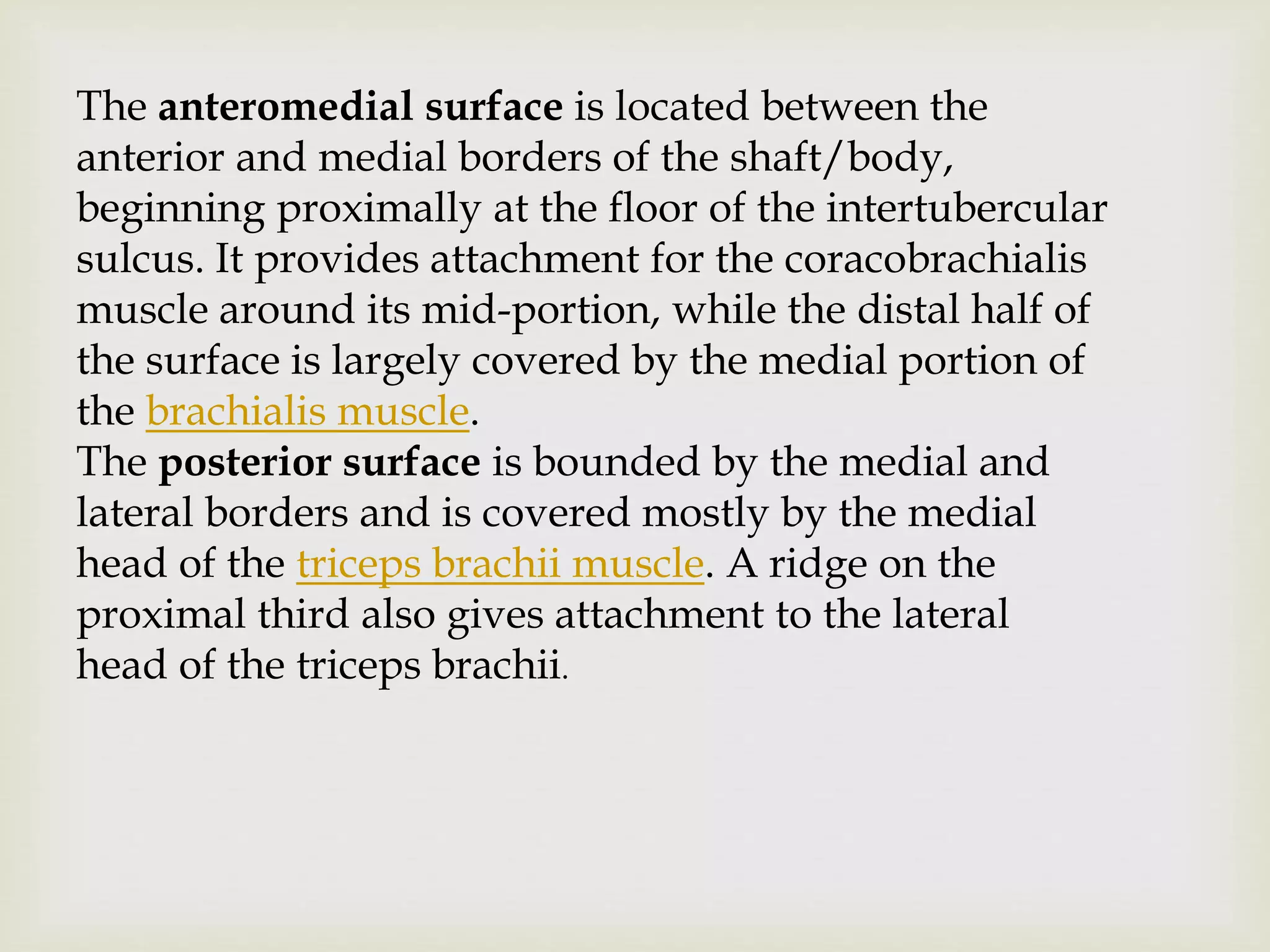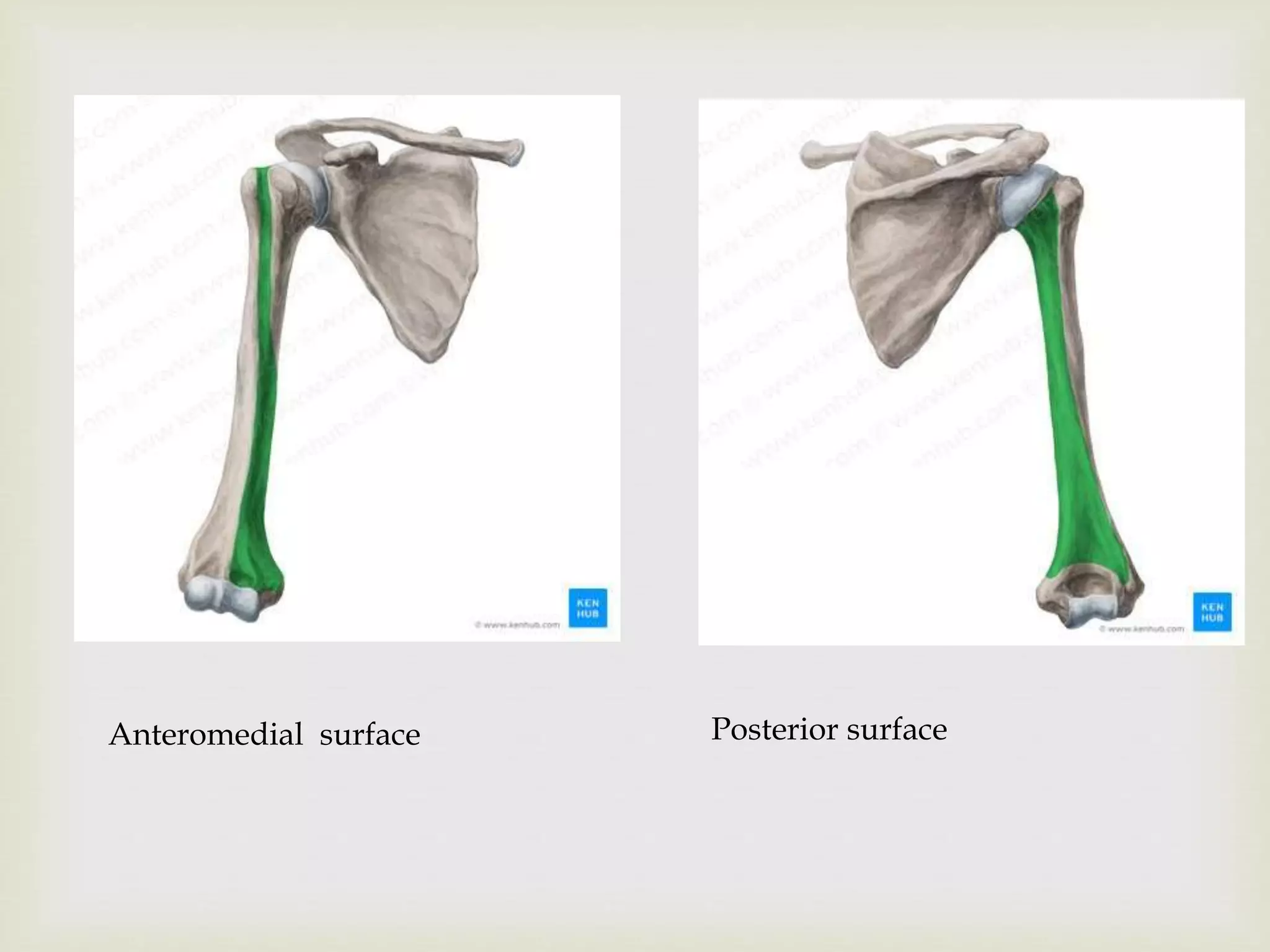The document describes the bones of the upper limb, including the clavicle, scapula, and humerus. It provides details on the anatomy of each bone, including their landmarks, articulations, and muscle attachments. Key points covered include the S-shape of the clavicle, triangular shape of the scapula with spine and fossae, articulation of humerus at shoulder and elbow joints, and distal landmarks like epicondyles and fossae. Mnemonics are provided to help remember muscle attachments and relationships between structures.











































































